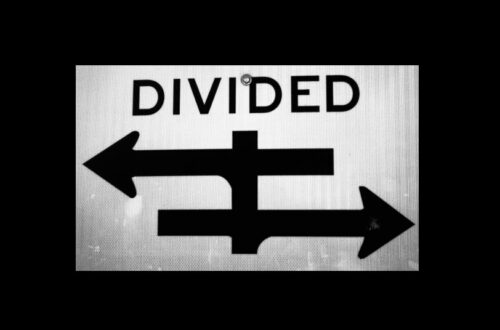
Waving and Heaving
“Waving and heaving the offering apparently had several purposes.
Waving and Elevating (Heaving)
“Waving and elevating the offering apparently had several purposes. In most cases, and always when animal meat and fat constituted the sacrifice, the ritual marked a change in ownership of the sacrifice from the offerer to God, and its consecration for the presiding priest’s meal (Leviticus 7:24–36). (VIII) (X)
The elevation offering could occur at various points of the ritual cycle: with grain offerings at the beginning (Leviticus 23:15) and with meat and mixed offerings in the middle (Exodus 29:23–26; Numbers 5:25; Leviticus 14:12) or at the end (Exodus 29:27–28; Lev. 9:21) of the ceremony. Notably, the elevation offering marks the transition to the ritual exit (through blessing) in the inaugural service of the priest (Leviticus 9:21), perhaps to signify his new right to preside at all sacrifices. The elevation of the offering thus marked important transitions in the ritual, especially prior to its climax.” (VIII) (X)
Major sacrifices such as the purification, holocaust or burnt, and “sin” offerings were not elevated because they already belonged to Yahweh. Moreover, the priest lifted only those parts of the carcass that he would eat (the breast and right shank), not the parts returning to the worshipper. (VIII) (X)
Exceptions to these conditions exist in the grain offerings in Leviticus 23; Numbers 5:15 [i.e., the grain offering of suspicion], all of which depart from the norm by being of barley rather than wheat and by lacking oil and incense. Also dissimilar is the offering for the person with scale disease, which cannot be paid in silver, unlike reparation offerings in other contexts. (VIII) (X)
You are to take the breast of the ram of Aaron’s consecration; you are to wave it as a wave offering before the Lord, and it is to be your share. You are to sanctify the breast of the wave offering and the thigh of the contribution, which were waved and lifted up as a contribution from the ram of consecration, from what belongs to Aaron and to his sons. (Exodus 29:26–27 NET)
Hebrew “terumah” [contribution] (Exodus 29:27) means simply an offering, a present, including all the offerings made by the Israelites as a present. This Hebrew word is frequently employed. Some of the rabbis attach to the word the meaning of elevation and refer it to the heave offering, which consisted in presenting the offering by a [single] motion up and [then] down, distinguished from the wave offering, which consisted in a repeated movement in a horizontal direction, a “wave offering to the Lord as ruler of the earth, a heave offering to the Lord as ruler of heaven.” The right shoulder, which fell to the priests in presenting thank offerings, was called the heave shoulder (Leviticus 7:34; Numbers 6:20). (I)
Elevating or Heaving
The act of elevating or heaving back and forth typologically portrays the death, burial, and resurrection of our Lord and Savior Jesus Christ in the Old Covenant. In the New Covenant, we have reminders in the water Baptism (1) and the Lord’s Supper (1) (i.e., Eucharist or Communion).
Having been buried with him in baptism, you also have been raised with him through your faith in the power of God who raised him from the dead. And even though you were dead in your transgressions and in the uncircumcision of your flesh, he nevertheless made you alive with him, having forgiven all your transgressions. He has destroyed what was against us, a certificate of indebtedness expressed in decrees opposed to us. He has taken it away by nailing it to the cross. Disarming the rulers and authorities, he has made a public disgrace of them, triumphing over them by the cross. (Colossians 2:12–15 NET)
For I received from the Lord what I also passed on to you, that the Lord Jesus on the night in which he was betrayed took bread, and after he had given thanks he broke it and said, "This is my body, which is for you. Do this in remembrance of me." In the same way, he also took the cup after supper, saying, "This cup is the new covenant in my blood. Do this, every time you drink it, in remembrance of me." For every time you eat this bread and drink the cup, you proclaim the Lord's death until he comes. (1 Corinthians 11:23-26 NET)
Waving
“To wave an offering is to swing, sway, or move to and fro while physically presenting something in worship to the Resurrection and the Life through this action.” (II) The Waving to the four corners of the World (North, East, West, South) typologically represents that Jesus died for everyone, everywhere, and at every time since the fall of man on Earth! Now that is Good NEWS! Hallelujah!
Biblical Typologies, Metaphors, & Similes Series:
- The Old Leaven of the Kingdom of Darkness
- The New Leaven of the Kingdom of Heaven
- Wine
- Water
- Finely Sifted (Wheat) Flour
- Frankincense
- Myrrh
- Anointing Oil
- Olive Oil
- Honey
- Salt
- Waving and Heaving
- Barley
- Gold
- Silver
- Bronze
- Stone
- Wood
- Linen
- Iron
- Shofar and Trumpet
Shalom
(Security, Wholeness, Success)
Peace
Then he said to them, “Therefore every expert in the law who has been trained for the kingdom of heaven is like the owner of a house who brings out of his treasure what is new and old.” (Matthew 13:52 NET)
(1) Select the link to open another article with additional information in a new tab.
(I) Neusner, J. (1988). The Mishnah : A new translation (p. 742). New Haven, CT: Yale University Press.
(II) Malda, B. D. (Ed.). (2015). Come and Worship: Ways to Worship from the Hebrew Scriptures (p. 62). Clarksville, MD: Lederer Books: a division of Messianic Jewish Publishers.
(III) Sklar, J. (2013). Leviticus: An Introduction and Commentary. (D. G. Firth, Ed.) (Vol. 3, p. 101). Nottingham, England: Inter-Varsity Press.
(IV) Masterman, E. W. G. (1915). Barley. In J. Orr, J. L. Nuelsen, E. Y. Mullins, & M. O. Evans (Eds.), The International Standard Bible Encyclopaedia (Vol. 1–5, p. 405). Chicago: The Howard-Severance Company.
(V) Balfour, J. H. (1885). The Plants of the Bible (p. 212). London; Edinburgh; New York: T. Nelson and Sons.
(VI) Eisenberg, R. L. (2004). The JPS guide to Jewish traditions (1st ed., p. 670). Philadelphia: The Jewish Publication Society.
(VII) Hannah, J. D. (1985). Exodus. In J. F. Walvoord & R. B. Zuck (Eds.), The Bible Knowledge Commentary: An Exposition of the Scriptures (Vol. 1, p. 153). Wheaton, IL: Victor Books.
(VIII) Easton, M. G. (1893). In Easton’s Bible dictionary. New York: Harper & Brothers.
(IX) Singer, I. (Ed.). (1901–1906). In The Jewish Encyclopedia: A Descriptive Record of the History, Religion, Literature, and Customs of the Jewish People from the Earliest Times to the Present Day, 12 Volumes (Vol. 9, p. 568). New York; London: Funk & Wagnalls.
(X) Hamilton, M. W. (2000). Elevation Offering. In D. N. Freedman, A. C. Myers, & A. B. Beck (Eds.), Eerdmans dictionary of the Bible (p. 392). Grand Rapids, MI: W.B. Eerdmans.
(XI) (2016). The Lexham Figurative Language of the New Testament Dataset. In J. R. Westbury, J. Thompson, K. A. Lyle, & J. Parks (Eds.), Lexham Figurative Language of the Bible Glossary. Bellingham, WA: Lexham Press.
(XII) Larson, K. (2000). I & II Thessalonians, I & II Timothy, Titus, Philemon (Vol. 9, p. 331). Nashville, TN: Broadman & Holman Publishers.
(XIII) Lindsey, F. D. (1985). Leviticus. In J. F. Walvoord & R. B. Zuck (Eds.), The Bible Knowledge Commentary: An Exposition of the Scriptures (Vol. 1, p. 177). Wheaton, IL: Victor Books.
(XIV) Neusner, J. (2011). The Babylonian Talmud: A Translation and Commentary (Vol. 19, p. 617). Peabody, MA: Hendrickson Publishers.
(XV) Freeman, J. M., & Chadwick, H. J. (1998). Manners & customs of the Bible (p. 143). North Brunswick, NJ: Bridge-Logos Publishers.
(XVI) Wuest, K. S. (1961). The New Testament: an expanded translation (1 Co 5:6–8). Grand Rapids, MI: Eerdmans.
(XVII) Thompson, J. A. (1974). Deuteronomy: An Introduction and Commentary (Vol. 5, p. 147). Downers Grove, IL: InterVarsity Press.
(XVIII) Keach, B. (1858). An Exposition of the Parables and Express Similitudes of Our Lord and Saviour Jesus Christ(pp. 239–240). London: Aylott and Co.
(XIX) Beis Hamikdash Topics – Tour of the Temple: Class 10, The Altar
(XX) C. S. Lewis, Miracles (New York: HarperCollins, 1974), pp. 236–37.
(XXI) Hall, K. D. (2000). Libation. In D. N. Freedman, A. C. Myers, & A. B. Beck (Eds.), Eerdmans dictionary of the Bible (p. 807). Grand Rapids, MI: W.B. Eerdmans.
(XXII) Rogers, A. (2017). Back to Bethel. In Adrian Rogers Sermon Archive (Ge 35). Signal Hill, CA: Rogers Family Trust.
(XXIII) Ryrie, C. C. (1999). Basic Theology: A Popular Systematic Guide to Understanding Biblical Truth (p. 341). Moody Press.
Propitiation, as we have seen, means the placating or satisfying of the personal wrath of God. Expiation is the removal of impersonal wrath, sin, or guilt. Expiation has to do with reparation for a wrong; propitiation carries the added idea of appeasing an offended person and thus brings into the picture the question of why the offended person was offended. In other words, propitiation brings the wrath of God into the picture, while expiation can leave it out.



